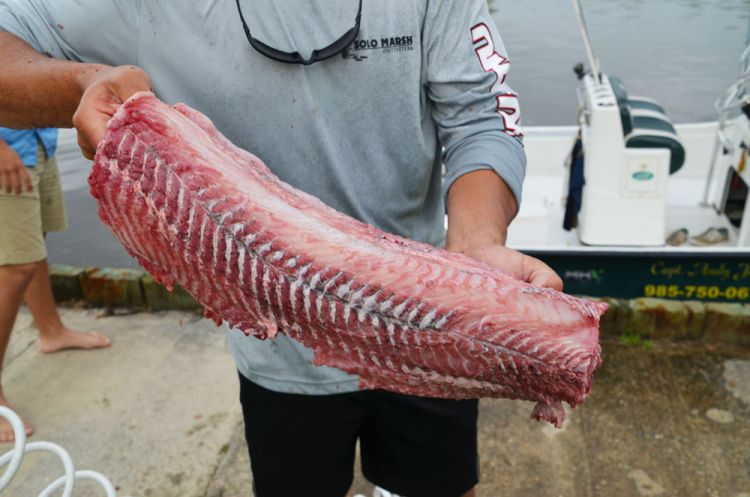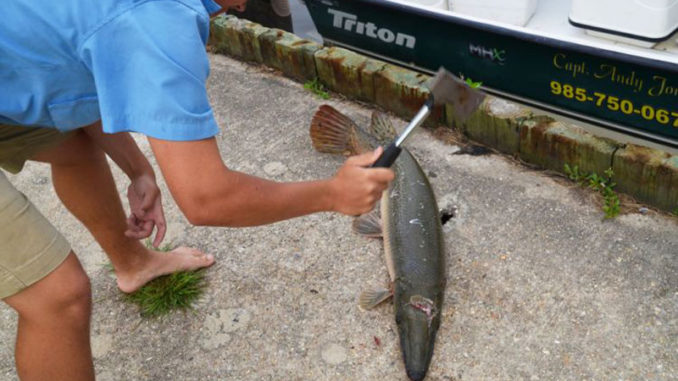
First, forget everything you have learned about how to clean any other fish. And I mean everything.
Alligator gar are encased with an almost impervious layer of scales made of true bone. And they are incredibly slimy and difficult to handle. To top it off, their gill covers are extremely sharp, likely sharper than the knife in your hand.
Second, ditch the flexible-bladed fillet knife. It’s a poor choice for this fish.
Better is a stout, relatively short-bladed knife. Most important of all, you must have either a machete or cane knife, although a hatchet will work, too. (For the final two cuts, a hatchet is actually best.)
8 steps for cleaning alligator gar
Step 1: If your gar hasn’t died from the ride in, it must be killed by blows to the head. A hatchet works best for this task. 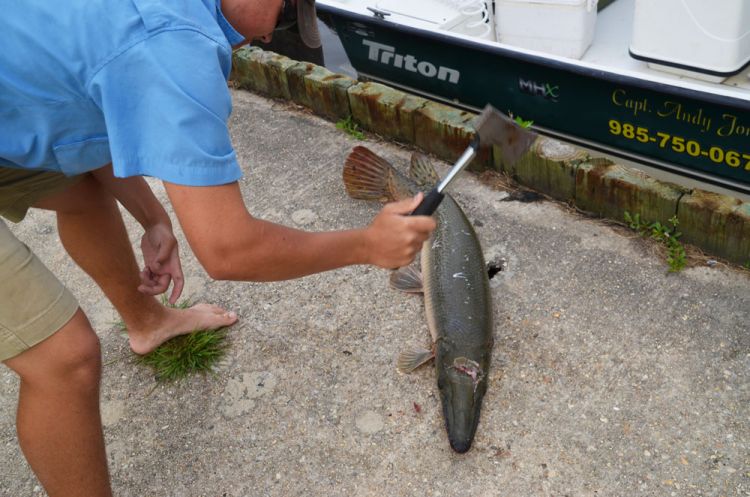 Step 2: Firmly grasp the short dorsal (back) fin in one hand and with a machete or cane knife in the other, chop in a forward direction under the skin under the fin. Do not aim the chops too high or you will chop the fin off the fish or worse yet, cut your fingers. This is the most sensitive step in the entire cleaning process.
Step 2: Firmly grasp the short dorsal (back) fin in one hand and with a machete or cane knife in the other, chop in a forward direction under the skin under the fin. Do not aim the chops too high or you will chop the fin off the fish or worse yet, cut your fingers. This is the most sensitive step in the entire cleaning process.
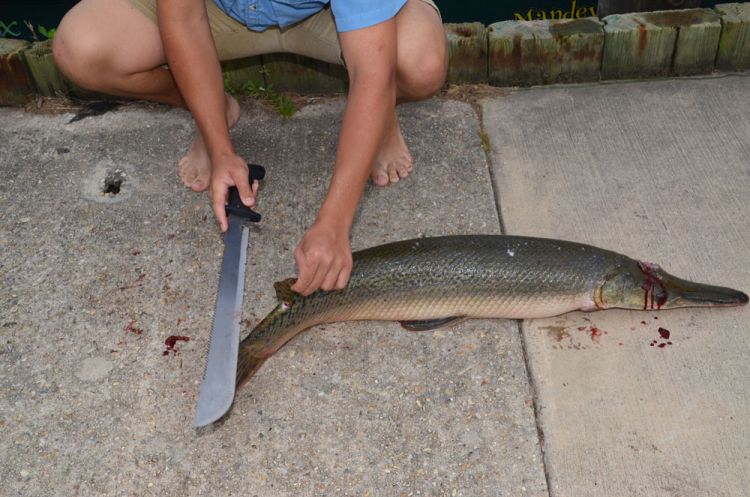 Step 3: With short chops, cut a strip of skin up the back, while pulling it with the other hand, all the way to the fish’s head.
Step 3: With short chops, cut a strip of skin up the back, while pulling it with the other hand, all the way to the fish’s head.
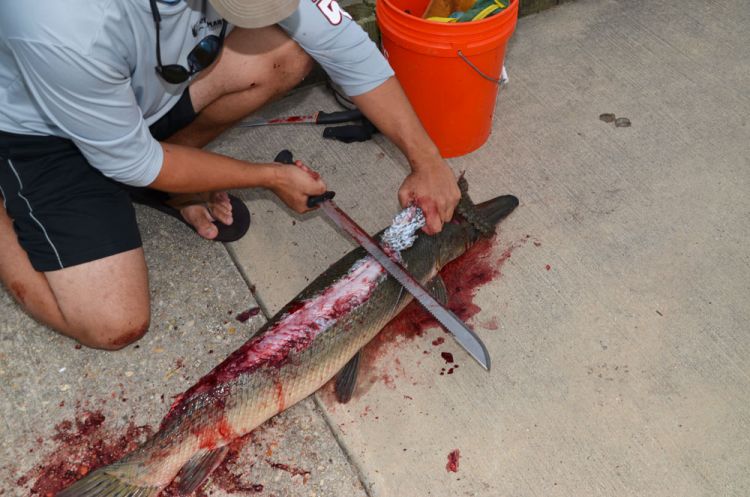 Step 4: Cut the flesh loose from the stiff skin off both sides and down the length of the fish. Cut through the bases of all fin attachments.
Step 4: Cut the flesh loose from the stiff skin off both sides and down the length of the fish. Cut through the bases of all fin attachments.
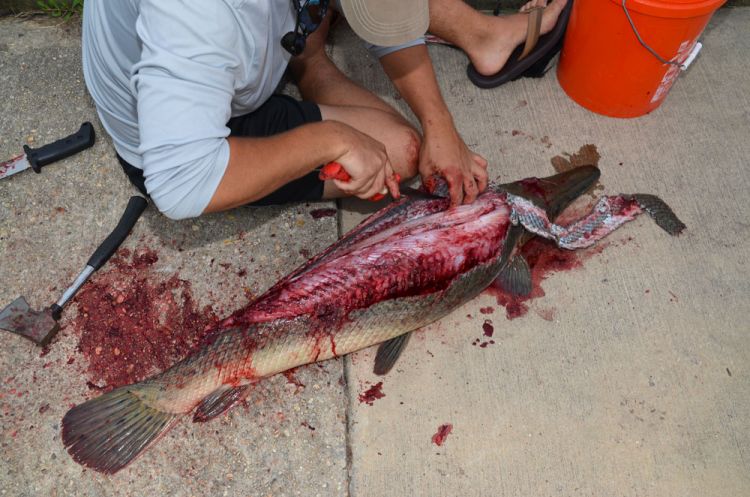 Step 5: Cut through the backbone of the fish immediately behind the head. A hatchet is best for this, but with a little more effort, a machete or cane knife also can be used.
Step 5: Cut through the backbone of the fish immediately behind the head. A hatchet is best for this, but with a little more effort, a machete or cane knife also can be used.
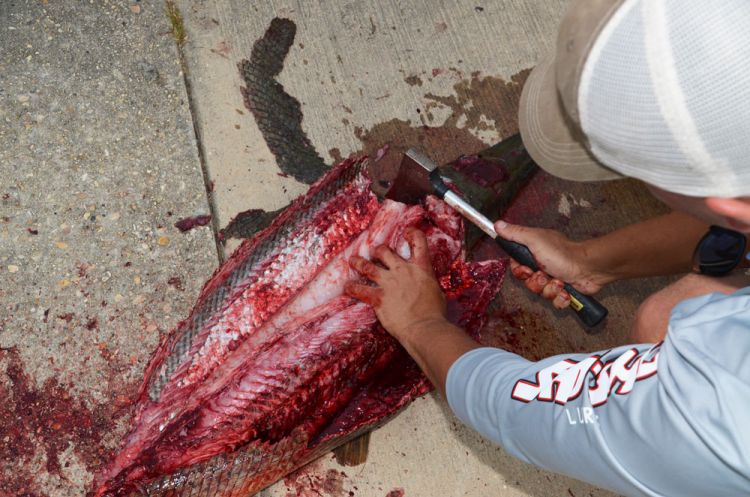 Step 6: Make a similar cut through the backbone above the tail of the fish.
Step 6: Make a similar cut through the backbone above the tail of the fish.
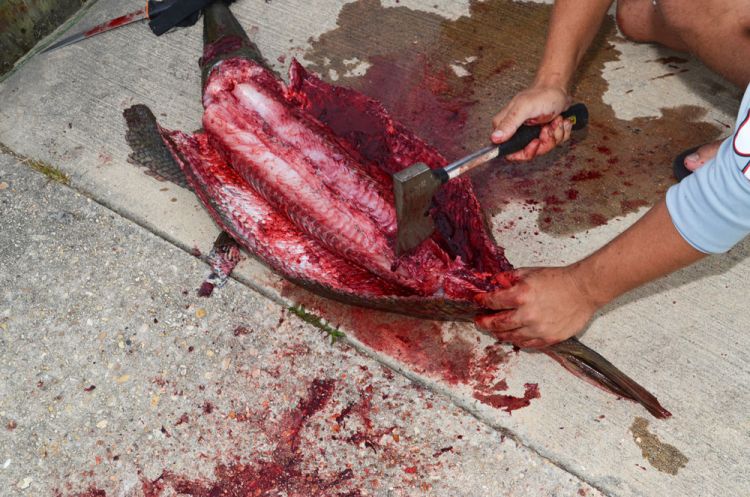 Step 7: Roll the carcass over and remove and discard the viscera.
Step 7: Roll the carcass over and remove and discard the viscera.
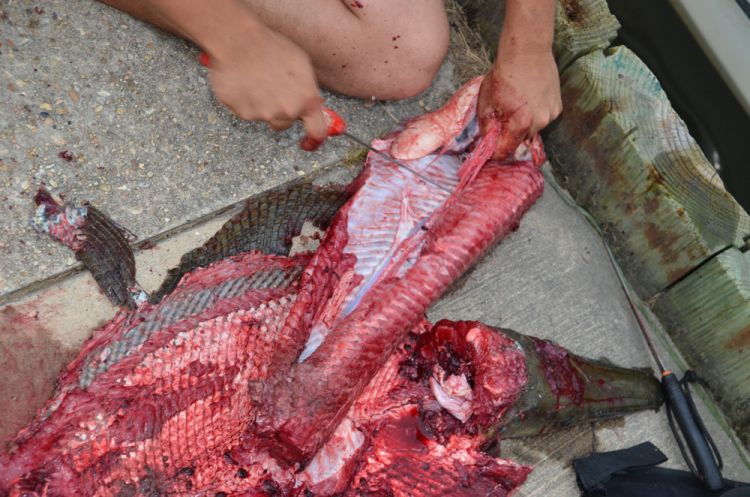 Step 8: This is what your gar should look like immediately after cleaning and before washing.
Step 8: This is what your gar should look like immediately after cleaning and before washing.
